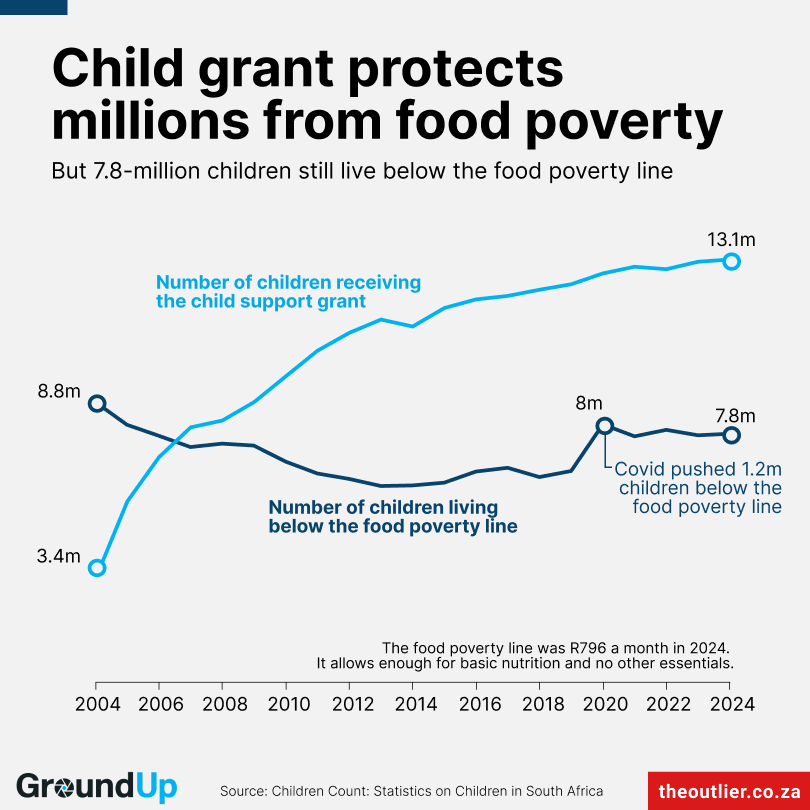Reimagining Home: What California’s Housing Crisis Reveals About Power and Policy – TriplePundit

Report on Housing Insecurity and its Impact on Sustainable Development Goals in California
This report examines the housing and homelessness crisis in California as a primary driver of poverty and a significant barrier to achieving multiple Sustainable Development Goals (SDGs). Based on an analysis of the situation and insights from Jessica Nowlan, President of Reimagine Freedom, this document outlines the systemic failures contributing to the crisis and highlights community-led initiatives aimed at fostering sustainable and equitable solutions.
The Housing Crisis: A Failure to Meet SDG 1 (No Poverty) and SDG 11 (Sustainable Cities and Communities)
The high poverty rate in California is intrinsically linked to its housing crisis. The failure to provide affordable and accessible housing directly undermines the core principles of SDG 1 (No Poverty) and SDG 11 (Sustainable Cities and Communities). The crisis is not a result of resource scarcity but of systemic policy choices that prioritize profit over human need.
- Economic Hardship: Four in ten low-income Californians are either homeless or spend over half their income on rent, trapping them in a cycle of poverty.
- Policy Failure: The crisis is perpetuated by policy decisions rather than individual failings. This challenges the goal of creating inclusive, safe, and resilient communities.
Deconstructing Myths Surrounding Homelessness
Common misconceptions about the housing crisis obscure its root causes and hinder progress toward effective solutions. Addressing these myths is crucial for advancing SDG 10 (Reduced Inequalities) and SDG 8 (Decent Work and Economic Growth).
- Myth of Housing Scarcity: The assertion of a housing shortage is contradicted by the existence of numerous vacant properties in urban centers like Los Angeles. The issue is not a lack of housing stock but a distribution model driven by profit, which fails Target 11.1 of ensuring access to adequate, safe, and affordable housing for all.
- Myth of “Affordable Housing” Efficacy: Many public-private partnerships intended to create affordable housing are ineffective for low-income individuals. Rigid, profit-oriented management practices can lead to evictions over minor income fluctuations, demonstrating a system that is punitive rather than supportive.
- Myth of Individual Failure: The narrative that homelessness stems from addiction or personal failure ignores the primary economic driver: wages have not kept pace with the cost of living. The dismantling of social safety nets and job training programs, such as Job Corps, has removed critical pathways to stability, directly conflicting with the objectives of SDG 8.
The Gendered Impact of Housing Insecurity: A Challenge to SDG 5 (Gender Equality)
The housing crisis disproportionately affects women, girls, and gender-expansive people, yet this gendered dimension is often overlooked in policy discussions. A failure to address these specific vulnerabilities prevents the full realization of SDG 5 (Gender Equality) and exacerbates existing inequalities under SDG 10.
- Youth Vulnerability: LGBTQ+, trans, and nonbinary youth face a high risk of homelessness after being rejected by their families. Once on the streets, they are often forced into underground economies for survival, leading to criminalization.
- Impact on Women and Families: Women, often as heads of households, are demonized for experiencing homelessness with their children. This ignores the systemic failures that make it impossible to secure stable housing. Policies must prioritize keeping families together to ensure the well-being of children (SDG 3: Good Health and Well-being).
- Violence and Lack of Safety: Unhoused women and gender-expansive individuals face horrific rates of sexual violence. Furthermore, post-incarceration support is critically inadequate, providing insufficient funds for even a single night of safe lodging.
- Inadequate Solutions: Placing vulnerable youth in Single-Room Occupancy (SRO) units is not a dignified or safe housing solution. It fails to provide the stability required for self-determination and well-being.
Reimagine Freedom: A Model for Achieving Sustainable Development Through Systemic Change
Reimagine Freedom, led by Jessica Nowlan, offers a transformative model for addressing the root causes of poverty and inequality. The organization’s work is deeply aligned with achieving multiple SDGs by empowering those most affected by systemic failures.
Strategic Pillars for Community-Rooted Economic Systems
The organization’s strategy is built on the principle that those with lived experience of systemic hardship hold the solutions for transformative change. This approach directly supports the creation of strong, just institutions as envisioned in SDG 16 (Peace, Justice and Strong Institutions).
- Leadership and Business Incubation: By investing in and incubating businesses led by women and gender-expansive people from marginalized communities, the model fosters economic independence and sustainable livelihoods (SDG 8).
- Culture Shift Through Storytelling: Changing the narrative around poverty and homelessness is essential to dismantling harmful stereotypes and building public support for just policies (SDG 10).
- Impact Investing: Designing and implementing new economic systems through impact investing aims to move entire communities out of poverty permanently, creating a sustainable and equitable future (SDG 1).
The “Freedom Charter,” developed by the community, demands housing that ensures safety, dignity, and self-determination—a direct call to action for fulfilling the promise of SDG 11. By focusing on long-term, visionary planning, this approach seeks to build lasting systems that empower communities and create a society where everyone can thrive.
Analysis of Sustainable Development Goals in the Article
1. Which SDGs are addressed or connected to the issues highlighted in the article?
The article discusses a complex web of social and economic issues, primarily centered around the housing crisis in California. These issues directly connect to several Sustainable Development Goals (SDGs):
- SDG 1: No Poverty – The article’s central theme is the poverty crisis in California, which it explicitly links to the high cost of housing. It states that California has the “highest poverty rate” and that this is the primary consequence of the housing crisis.
- SDG 5: Gender Equality – The article dedicates a significant section to how the housing crisis disproportionately affects “women, girls and gender-expansive people.” It highlights specific vulnerabilities, including domestic violence, sexual violence against unhoused women, and the challenges faced by LGBTQ+ youth and mothers heading households.
- SDG 8: Decent Work and Economic Growth – The connection between low wages and homelessness is a key point. The article argues that “the root cause of homelessness is that working people cannot afford to live” because “wages haven’t kept up with the cost of living.” The dismantling of the Job Corps program is cited as a failure to provide training and opportunities for youth.
- SDG 11: Sustainable Cities and Communities – This goal is at the core of the discussion. The entire article revolves around the “housing and homelessness crisis,” the lack of affordable and safe housing, and the failure of existing housing solutions to meet people’s needs.
- SDG 16: Peace, Justice and Strong Institutions – The article critiques systemic failures and “bad policy” as the root causes of the crisis. It points to ineffective and inaccessible social programs (like Section 8), the “vicious cycle” linking homelessness to the criminal justice system, and the failure of institutions to provide adequate support for vulnerable populations, such as those released from incarceration.
2. What specific targets under those SDGs can be identified based on the article’s content?
Based on the specific problems and solutions discussed, the following SDG targets are relevant:
- Under SDG 1 (No Poverty):
- Target 1.2: Reduce at least by half the proportion of men, women and children of all ages living in poverty. The article directly addresses this by highlighting California’s high poverty rate, driven by housing costs.
- Target 1.3: Implement nationally appropriate social protection systems. The article critiques the ineffectiveness and inaccessibility of social protection systems like Section 8, mentioning long waiting lists and bureaucratic hurdles that prevent people from accessing the support they need.
- Under SDG 5 (Gender Equality):
- Target 5.1: End all forms of discrimination against all women and girls everywhere. The article discusses how LGBTQ+, trans, and nonbinary youth are often kicked out of their homes, a clear form of discrimination leading to homelessness.
- Target 5.2: Eliminate all forms of violence against all women and girls. This is directly referenced when Jessica Nowlan mentions needing to provide “evidence of domestic violence” to expedite her housing application and the “horrific” rates of “sexual violence for unhoused women.”
- Target 5.5: Ensure women’s full and effective participation and equal opportunities for leadership. The work of Reimagine Freedom, which aims to build “economic power for women and gender-expansive people” and invests in their leadership, directly aligns with this target.
- Under SDG 8 (Decent Work and Economic Growth):
- Target 8.5: Achieve full and productive employment and decent work for all. The article’s assertion that “wages haven’t kept up with the cost of living” and that even a $15/hour minimum wage is insufficient points to a failure to provide decent work that allows for a basic standard of living.
- Target 8.6: Substantially reduce the proportion of youth not in employment, education or training. The cutting of the Job Corps program, which “provided housing, training and structure for young people,” is presented as a direct cause of youth homelessness, highlighting a failure to support this target.
- Under SDG 11 (Sustainable Cities and Communities):
- Target 11.1: Ensure access for all to adequate, safe and affordable housing and basic services. This is the central target of the article. It details the lack of affordable housing, the unsafe conditions in SROs (“it’s not safe, it’s not dignified”), and the failure of so-called “affordable housing” projects to be truly accessible to low-income people.
- Under SDG 16 (Peace, Justice and Strong Institutions):
- Target 16.2: End abuse, exploitation, trafficking and all forms of violence against children. The article describes how homeless youth are “pushed into the underground economy — sex work, drug sales — not by choice, but by necessity,” which is a form of exploitation.
- Target 16.3: Ensure equal access to justice for all. The story of Jessica Nowlan being “evicted and taken to court” over a few hundred dollars from a supposedly supportive housing program illustrates a lack of access to justice for the poor. The article also mentions the criminal justice system as a “vicious cycle” for the homeless.
- Target 16.6: Develop effective, accountable and transparent institutions. The article is a broad critique of institutional failure, from “bad policy” being the root cause of the crisis to housing programs that are “a trap” and gate money for ex-inmates (“$250”) that hasn’t changed since the 1970s.
3. Are there any indicators mentioned or implied in the article that can be used to measure progress towards the identified targets?
The article mentions several specific figures and qualitative descriptions that can serve as indicators to measure progress:
- Poverty Rate: The article explicitly states California has the “highest poverty rate,” making this a key indicator for Target 1.2.
- Housing Affordability: The statistic that “4 in 10 low-income Californians… pay over half of their income for rent” is a direct indicator for Target 11.1.
- Access to Social Protection: The “5 years into the waiting list” for Section 8 is a powerful indicator of the accessibility and effectiveness of social protection systems under Target 1.3.
- Housing Vacancy Rates: The observation that high-rise buildings in downtown Los Angeles are “half-empty” serves as an indicator of housing mismanagement and could be used to measure progress on Target 11.1.
- Rates of Violence: The mention of “horrific” rates of “sexual violence for unhoused women” implies that the prevalence of such violence is a critical indicator for Target 5.2.
- Wage vs. Cost of Living Gap: The statement that a “$15/hour minimum wage” is not a living wage is an indicator for Target 8.5. Progress could be measured by the ratio of minimum wage to the actual cost of living.
- Youth Homelessness and Training: The rate of youth homelessness and the number of available slots in programs like Job Corps are implied indicators for Target 8.6.
- Support for Formerly Incarcerated People: The “$250” gate money given upon release from prison is a specific, measurable indicator of the inadequacy of institutional support under Target 16.3 and 16.6.
4. Table of SDGs, Targets, and Indicators
| SDGs | Targets | Indicators Identified in the Article |
|---|---|---|
| SDG 1: No Poverty |
1.2: Reduce poverty in all its dimensions.
1.3: Implement social protection systems. |
– State poverty rate (California mentioned as highest). – Proportion of income spent on rent (“4 in 10… pay over half of their income”). – Length of waiting lists for housing assistance (“5 years into the waiting list” for Section 8). |
| SDG 5: Gender Equality |
5.1: End discrimination against women and girls.
5.2: Eliminate violence against women and girls. 5.5: Ensure women’s leadership and participation. |
– Proportion of homeless youth who are LGBTQ+ and kicked out of their homes. – Rates of sexual violence against unhoused women. – Prevalence of domestic violence as a factor in housing insecurity. – Number of women and gender-expansive people in leadership roles in economic development. |
| SDG 8: Decent Work and Economic Growth |
8.5: Achieve full employment and decent work for all.
8.6: Reduce the proportion of youth not in employment, education or training. |
– Gap between minimum wage ($15/hour mentioned) and the actual cost of living. – Rate of youth homelessness. – Number of and enrollment in youth job training programs (e.g., Job Corps). |
| SDG 11: Sustainable Cities and Communities | 11.1: Ensure access to adequate, safe and affordable housing. |
– Number of people experiencing homelessness. – Housing vacancy rates in urban centers (“building is half-empty”). – Number of evictions from “affordable housing” units. – Availability of safe and dignified housing solutions (vs. unsafe SROs). |
| SDG 16: Peace, Justice and Strong Institutions |
16.2: End abuse and exploitation of children.
16.3: Ensure equal access to justice. 16.6: Develop effective and accountable institutions. |
– Rate of youth involvement in the “underground economy” due to necessity. – Rate of criminal justice system involvement for homeless individuals. – Amount of financial assistance upon release from incarceration (“$250 at the gate”). – Effectiveness of public-private housing partnerships (e.g., eviction rates). |
Source: triplepundit.com

What is Your Reaction?
 Like
0
Like
0
 Dislike
0
Dislike
0
 Love
0
Love
0
 Funny
0
Funny
0
 Angry
0
Angry
0
 Sad
0
Sad
0
 Wow
0
Wow
0












































































